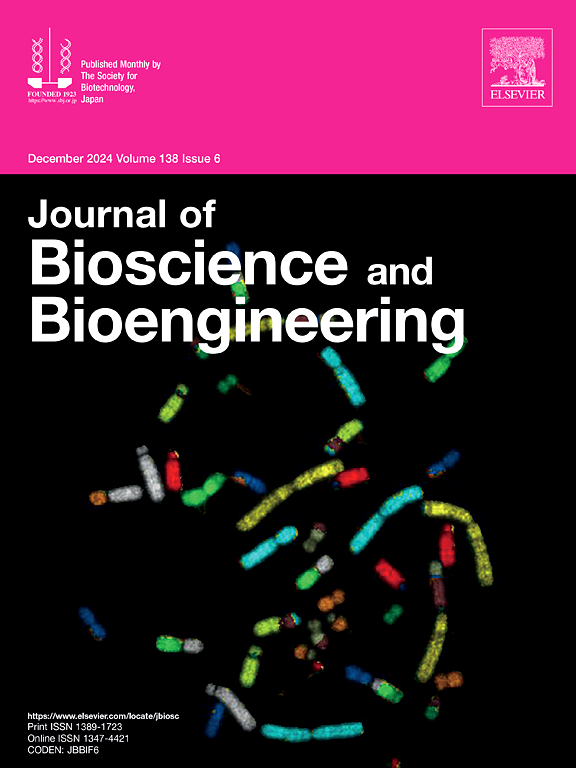Design of a thermostable bilirubin oxidase from Myrothecium verrucaria
IF 2.9
4区 生物学
Q3 BIOTECHNOLOGY & APPLIED MICROBIOLOGY
引用次数: 0
Abstract
Bilirubin oxidase (BOD), identified as a multicopper oxidase produced by Myrothecium verrucaria, plays a critical role in the oxidation of bilirubin to biliverdin, which is pivotal in various biochemical processes. To construct a highly thermostable BOD, we have used three protein engineering methods: (i) stabilization of the main chain (proline substitution), (ii) design of salt bridges, and (iii) improvement of hydrophobic interactions. Significant enhancement of thermostability was achieved through stabilization of the main chain (L476P, A496P), introduction of a salt bridge (Q495R), and improvement of hydrophobic interactions (A264V). Furthermore, the combination of these point mutations, which contributed to structural stabilization, resulted in a novel thermostable mutant. Utilizing the cumulative effect of point mutations based on the three strategies, we were able to obtain a thermostable enzyme that exhibited approximately 3.9-fold higher residual activity than wild-type BOD (WT) even after incubation at 60 °C for 1 h and nearly 10 °C higher optimum temperature than that of WT. Importantly, these mutations did not affect its 2,2′-azino-bis(3-ethylbenzothiazoline-6-sulfonic acid) oxidation activity. This approach provides a valuable strategy for improving the thermostability of multivalent copper oxidases and offers promising prospects for industrial applications.
一种耐热性胆红素氧化酶的设计。
胆红素氧化酶(Bilirubin oxidase, BOD)是由疣状分枝杆菌(Myrothecium verrucaria)产生的一种多铜氧化酶,在胆红素氧化为胆绿素的过程中起关键作用,在多种生化过程中起关键作用。为了构建高度热稳定的BOD,我们使用了三种蛋白质工程方法:(i)主链稳定(脯氨酸取代),(ii)设计盐桥,(iii)改善疏水相互作用。通过稳定主链(L476P, A496P),引入盐桥(Q495R)和改善疏水相互作用(A264V),显著提高了热稳定性。此外,这些点突变的组合有助于结构稳定,导致了一种新的耐热突变体。利用基于这三种策略的点突变的累积效应,我们能够获得一种耐热酶,即使在60°C孵育1小时后,其残余活性也比野生型BOD (WT)高出约3.9倍,比WT的最适温度高出近10°C。重要的是,这些突变不影响其2,2'-氮化-双(3-乙基苯并噻唑啉-6-硫酸)氧化活性。该方法为提高多价铜氧化酶的热稳定性提供了一种有价值的策略,具有良好的工业应用前景。
本文章由计算机程序翻译,如有差异,请以英文原文为准。
求助全文
约1分钟内获得全文
求助全文
来源期刊

Journal of bioscience and bioengineering
生物-生物工程与应用微生物
CiteScore
5.90
自引率
3.60%
发文量
144
审稿时长
51 days
期刊介绍:
The Journal of Bioscience and Bioengineering is a research journal publishing original full-length research papers, reviews, and Letters to the Editor. The Journal is devoted to the advancement and dissemination of knowledge concerning fermentation technology, biochemical engineering, food technology and microbiology.
 求助内容:
求助内容: 应助结果提醒方式:
应助结果提醒方式:


